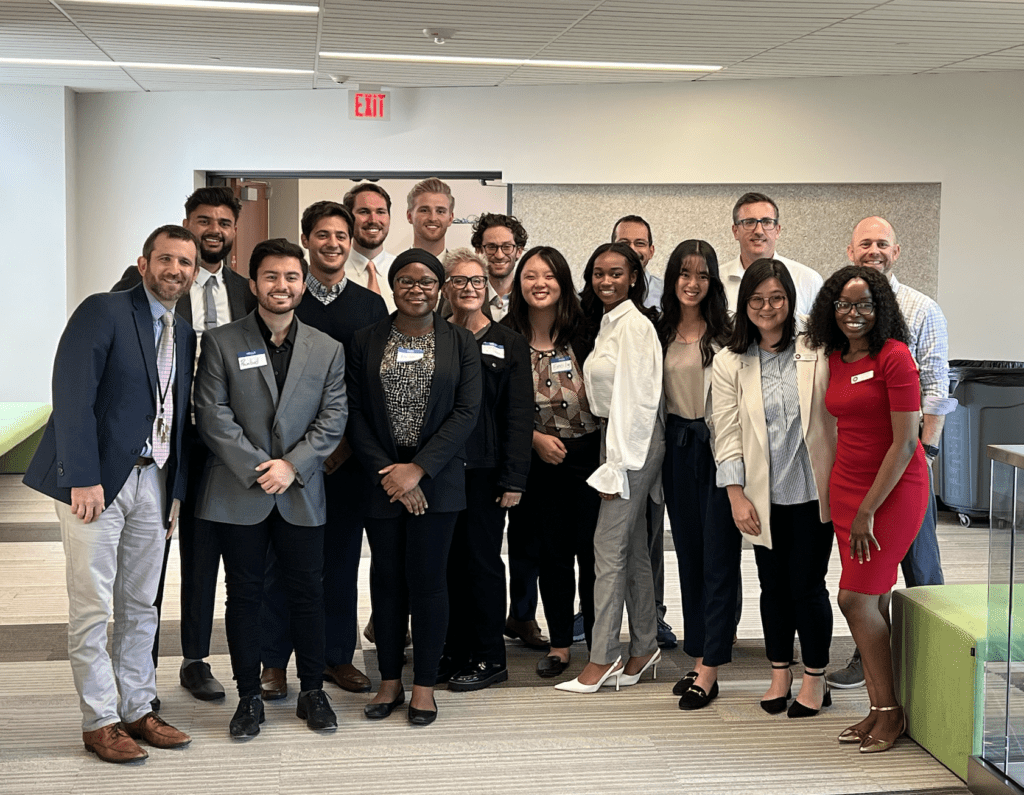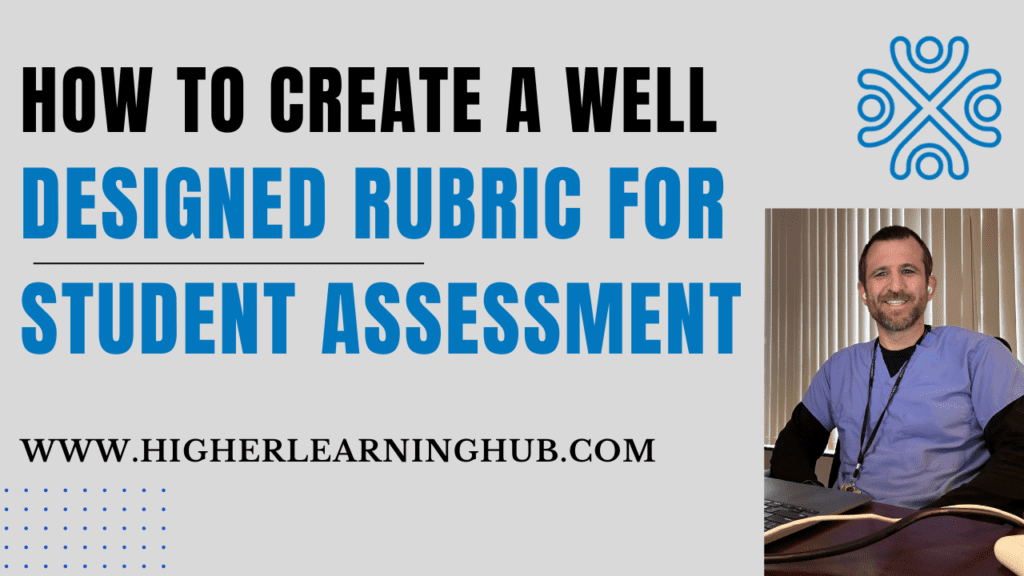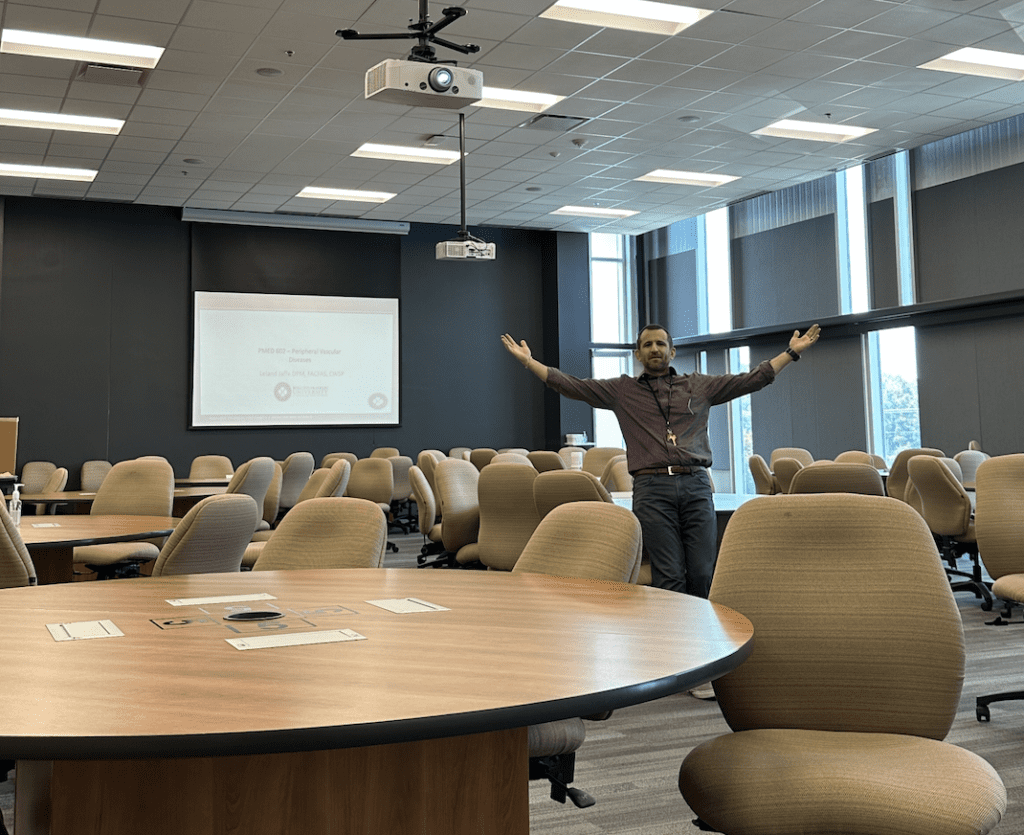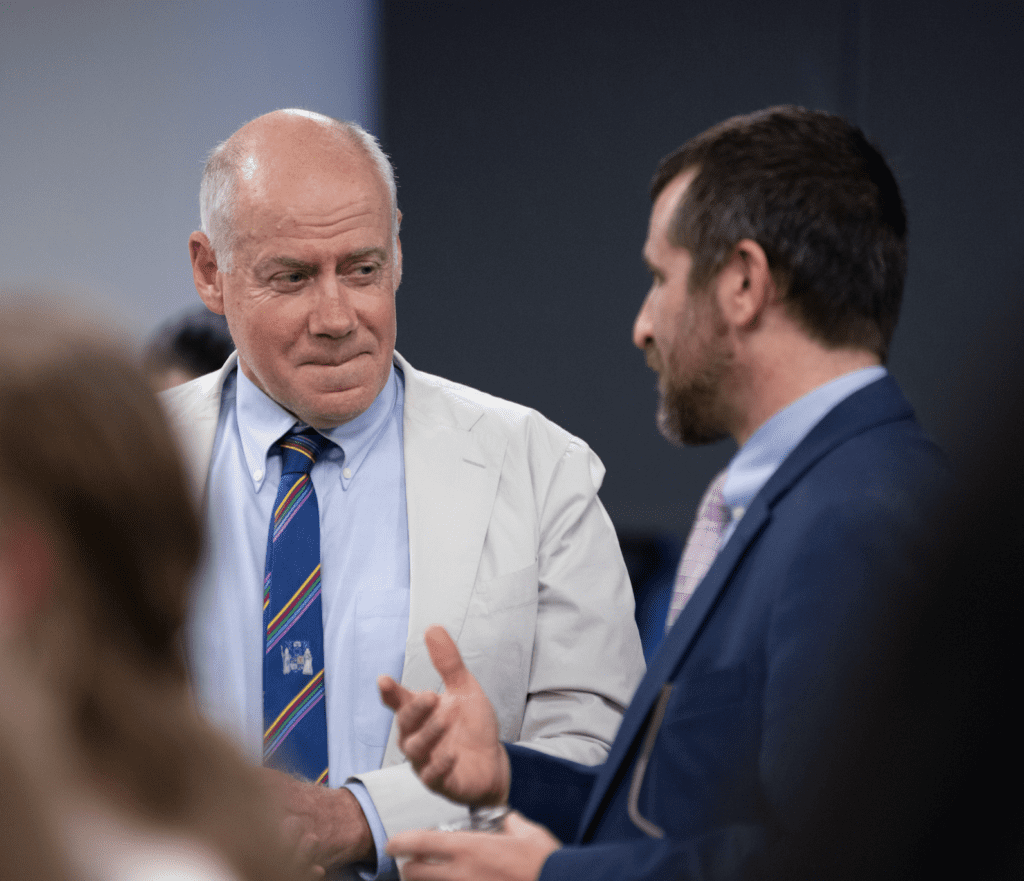Authored by Dr. Leland Jaffe; Associate Dean and Professor; Published on October 25, 2024
Starting your career as a new educator can be both exciting and daunting. That first year as an educator is the toughest! You’re eager to make a difference, but navigating the world of academia comes with a learning curve.
This post provides you with essential tips to thrive in your new role as an educator. By focusing on practical strategies, you’ll gain tools to engage students, foster a positive learning environment, and manage your workload effectively – all while maintaining your sanity. Let’s set the foundation for a successful and rewarding teaching career that benefits both you and your students.
Building Strong Relationships with Students


Building a strong rapport with students is an essential element of effective teaching. When students feel connected to their educators, they are more motivated and engaged in the classroom. This connection goes beyond just knowing their names; it involves understanding their learning styles, promoting a supportive environment, and communicating effectively.
Understanding Student Needs
It’s important to recognize that students have diverse learning styles. Identifying these differences requires observation and communication. Here are some ways to better understand and address these differences:
- Surveys and Feedback Forms: Regularly using these tools can help educators gauge students’ interests and challenges, allowing for tailored instruction. Surveys at the end of a course are extremely valuable to learn what went well and what could improve throughout your course. It’s important to continue to update your course content to meet the needs of the students. (see blog post on using student feedback to improve your teaching methods)
- One-on-One Meetings: Setting aside time to meet with students individually provides insights into their unique learning styles and personal circumstances – especially for students who are having academic difficulty.
- Classroom Observations: Simply watching how students interact and engage with materials can reveal much about their needs and preferences.
For more in-depth strategies on this topic, visit this resource for a comprehensive overview.
Fostering a Supportive Environment
When students feel safe and supported, they thrive academically and socially. Consider these approaches:
- Encourage Inclusivity: Incorporate diverse materials that reflect various cultures and backgrounds to make every student feel represented.
- Set Clear Expectations: Establish rules and routines that foster mutual respect and collaboration. If students clearly know what is expected of them, they’re more likely to find success.
- Provide Positive Reinforcement: Praise efforts and accomplishments to build confidence and create a positive learning atmosphere.
A supportive classroom is vital for student well-being; find more ideas here.
Effective Communication Strategies
Clear communication is the bridge between understanding and misunderstandings. By applying effective communication strategies, educators can enhance student comprehension and engagement:
- Active Listening: Show students that their voices matter. This involves paying attention and responding thoughtfully to their contributions. I make every effort to create a safe environment where students feel comfortable contributing to classroom discussions.
- Visual Aids: Use charts, diagrams, and videos to clarify complex concepts and cater to visual learners.
- Consistent Feedback: Provide timely and constructive feedback to guide students in their learning process.


Classroom Management Techniques
Teaching is such a privilege—one that involves fostering curiosity and cultivating a positive learning environment. A significant part of this process is classroom management. It involves maintaining a focused and safe classroom where students can focus on learning. But how do you do that as a new teacher? Let’s explore some effective techniques to get you started on the right foot.
Establishing Clear Expectations As A New Teacher
Setting clear expectations helps students know what is expected and ensures everyone is on the same page from the start. From the very first day, it’s important to establish what you expect of them, and what they should expect from you. Why? Because these guidelines become the foundation of a well-managed classroom. They minimize disruptive behaviors and contribute to a positive atmosphere beneficial for learning.
When students understand the boundaries and expectations, they’re more likely to meet them. Start with a simple set of rules:
- Respect each other: Encourage a culture of respect among students. This helps to create a safe space where students feel comfortable contributing to classroom discussions.
- Listen when others are speaking: This keeps the communication flow orderly.
- Be prepared for class: Ensure students come prepared for class each day.
Clear expectations are particularly beneficial for new teachers who must quickly establish authority and order within the classroom setting.
Utilizing Positive Reinforcement
Positive reinforcement is a powerful tool – as it’s important to not only focus attention on underperforming students. It helps to encourage student success by rewarding them when they find success.
Here’s how you can effectively use positive reinforcement:
- Acknowledge the behavior immediately: This shows students that you appreciate their effort.
- Be specific: Tell them exactly what they did well – for example, “Great job interpreting the x-ray findings”
Utilizing these strategies will not only improve the overall classroom climate but also build a strong student-teacher relationship.
Effective Lesson Planning
Successful lesson planning involves setting clear goals, engaging diverse learners, and understanding how well students grasp the material. This section will explore these key components to help you create lesson plans that resonate with and enhance your students’ learning experiences.
Setting Learning Objectives
Creating clear and measurable learning objectives is the foundation of any successful lesson. These objectives act as a roadmap, guiding both the teacher and the students through the learning process. What should students be able to achieve by the end of the lesson?
- Make Objectives Student-Centered: Create objectives from the student’s perspective to ensure clarity and engagement.
- Ensure Objectives Are Measurable: Use verbs that clearly demonstrate what students will be able to do.
- Align with Bloom’s Taxonomy: Incorporating a range of cognitive skills ensures a well-rounded learning experience.
For more on creating effective learning objectives, check out these best practices for creating learning objectives.
Incorporating Different Learning Styles
Every classroom contains a mix of learning styles. Some students learn best through visuals, others through sounds, and some through hands-on experiences. Catering to these different styles ensures a more inclusive education.
- Visual Learners: Use charts, diagrams, and videos to illustrate concepts.
- Auditory Learners: Incorporate discussions, podcasts, and music.
- Kinesthetic Learners: Engage students with experiments, hand skills, or other physical activities.


Assessing Student Progress – Formative vs Summative Assessments
Assessing how well students understand the material is critical in lesson planning. Traditional tests aren’t the only way to gauge progress; incorporating a variety of methods can provide a fuller picture.
- Formative Assessments: Quick checks during class can include quizzes, one-minute papers, or concept maps. (see blog post on 14 Formative Assessment Examples)
- Summative Assessments: End-of-unit tests and projects showcase comprehensive understanding.
- Peer Reviews and Self-Assessments: Encourage reflection and increase self-awareness among students.
A mix of these strategies helps tailor future instruction to meet students’ needs, moving everyone forward effectively. Learn about assessment tools for measuring student progress.
By delving into effective lesson planning, educators can enhance their teaching methods and foster an environment where all students can thrive. Thoughtful preparation and understanding your students’ unique needs make teaching a rewarding and impactful profession.
Professional Development and Collaboration
Success in the classroom often depends on a teacher’s journey through continuous learning and connection. Embracing professional development and collaboration is not just a step forward; it is a leap. These efforts transform teaching practices from solitary to dynamic, helping educators build robust skills while also creating a supportive network that enriches their careers.
Participating in Workshops and Conferences
Attending workshops and conferences can be likened to charging a device—your skills are powered up and ready to go. These events open the door to new ideas and methods that can invigorate your classroom teaching. Here’s why participating is so crucial:
- Skill Enhancement: Workshops offer a hands-on approach to learning new techniques and tools, ensuring you can adapt and thrive in an ever-changing educational landscape.
- Networking Opportunities: Conferences provide a platform to meet other educators. This can lead to sharing ideas and even collaborative projects, enhancing your professional journey.
Learning from the experiences shared in these gatherings ensures you are not just teaching but evolving as an educator. For more insights on the significance of professional development, you might want to check out Why Professional Development Matters.


Building a Support Network
Building a support network certainly can make that first year of teaching easier. Engaging with seasoned teachers creates a support system that guides you through common challenges and triumphs.
- Mentorship: Experienced teachers can provide invaluable advice and insights into effective classroom management and instructional strategies.
- Shared Resources: Tap into a wealth of resources and shared lesson plans that can make your teaching more diverse and engaging.
Building these connections enriches your teaching and ensures you have a safety net during challenging times. Learn more about the importance of teacher collaboration.
Seeking Feedback and Continuing Education
Feedback reveals our teaching strengths and areas for improvement. Seeking feedback from peers or mentors promotes a culture of growth and learning.
- Honest Evaluations: Receiving constructive criticism helps in refining strategies and approaches in the classroom while fostering professional growth.
- Continuing Education: Enroll in courses or certifications to expand your knowledge base and stay ahead in your profession, ensuring you are never stagnant. See if your academic institution offers professional development opportunities.
Professional development is key to keeping your teaching effective and current, while collaboration with others builds a community that enhances your work life and student success.
Self-Care and Work-Life Balance
Teaching is a rewarding yet demanding profession. For new educators, finding the right balance between work and personal life can seem overwhelming. It’s essential to prioritize self-care and work-life balance to be effective at work and happy at home. Explore practical strategies below that can make a real difference in your life.


Setting Boundaries
Finding a healthy separation between work and personal life doesn’t just happen by chance. You need to set boundaries. Why is this so important? Without boundaries, work might seep into every corner of your personal time. There will always be more work to do – let it wait until the next day.
Here are effective techniques to maintain those boundaries:
- Establish a clear end to your workday. Decide when to stop checking emails and scheduling meetings.
- Create a dedicated workspace. This helps you mentally separate work from home life.
- Communicate your boundaries. Let colleagues and students know when you are and aren’t available.
For more about maintaining boundaries, check out this guide that delves into these concepts.
Practicing Mindfulness and Stress Management
Managing stress is crucial for sustaining your health and well-being. Through mindfulness and stress management, you can maintain a calm and focused mindset.
Here’s what you can try:
- Meditation: Even a few minutes a day can significantly reduce stress. You can explore these tips for quick meditation techniques.
- Exercise: Physical activity isn’t just good for your body; it also releases endorphins, which improve mood. Whether it’s a morning jog or a yoga class, find something enjoyable that fits into your routine.
- Mindful breathing: Taking 60 seconds for deep breathing whenever you’re feeling overwhelmed can work wonders.
By setting boundaries and practicing mindfulness, work-life balance becomes more than just a buzzword; it becomes a part of your life as an educator. Remember, your mental health is just as important as your dedication to students.
Tips for New Educators – Conclusion
Effective teaching begins with building a positive classroom environment. Understanding students as individuals is key to fostering engagement and learning. Encourage active participation and ensure lessons are inclusive and accessible.
Embrace innovation in teaching methods. Integrating technology and diverse resources can enhance learning experiences and outcomes. Stay current with educational trends to remain effective in the classroom.
For new educators, confidence is critical. Embrace the first year with enthusiasm and a willingness to learn from experience. Each challenge is an opportunity for growth.
Think about how these tips can improve your teaching practice. What will be your first change? Your insights can inspire and motivate others. Share your thoughts below!







